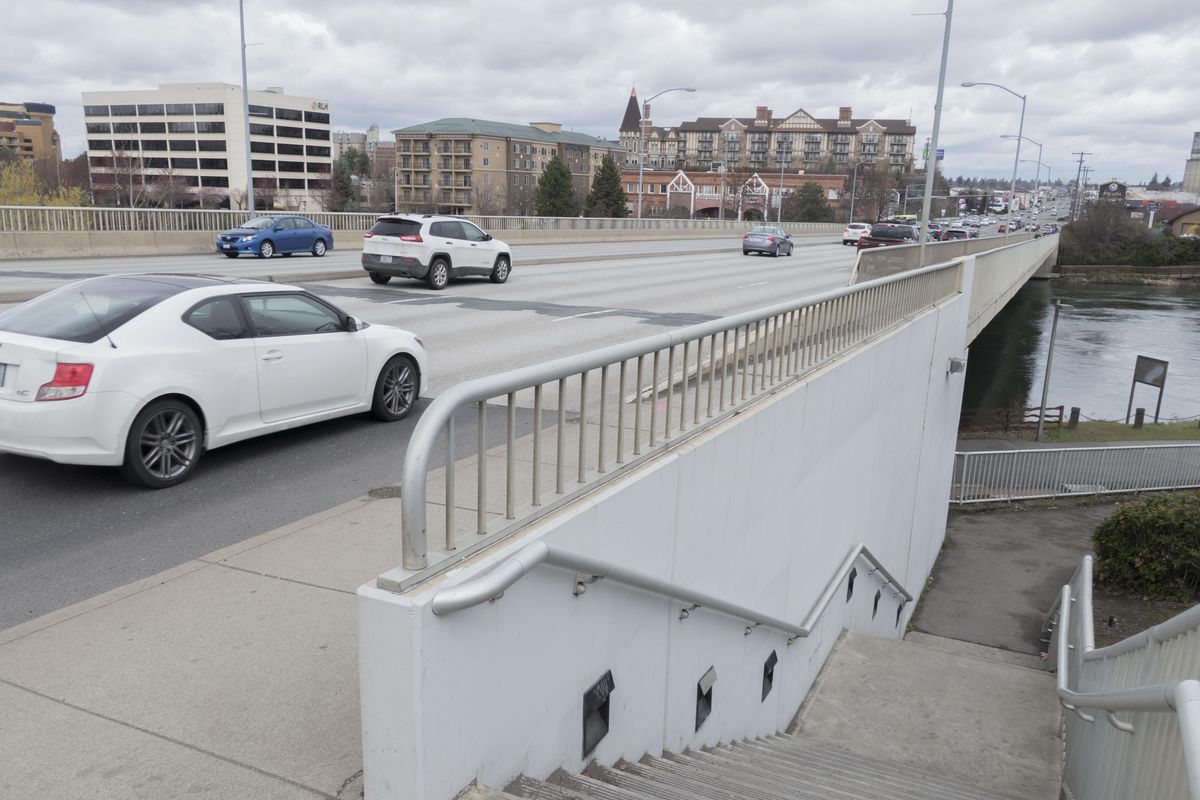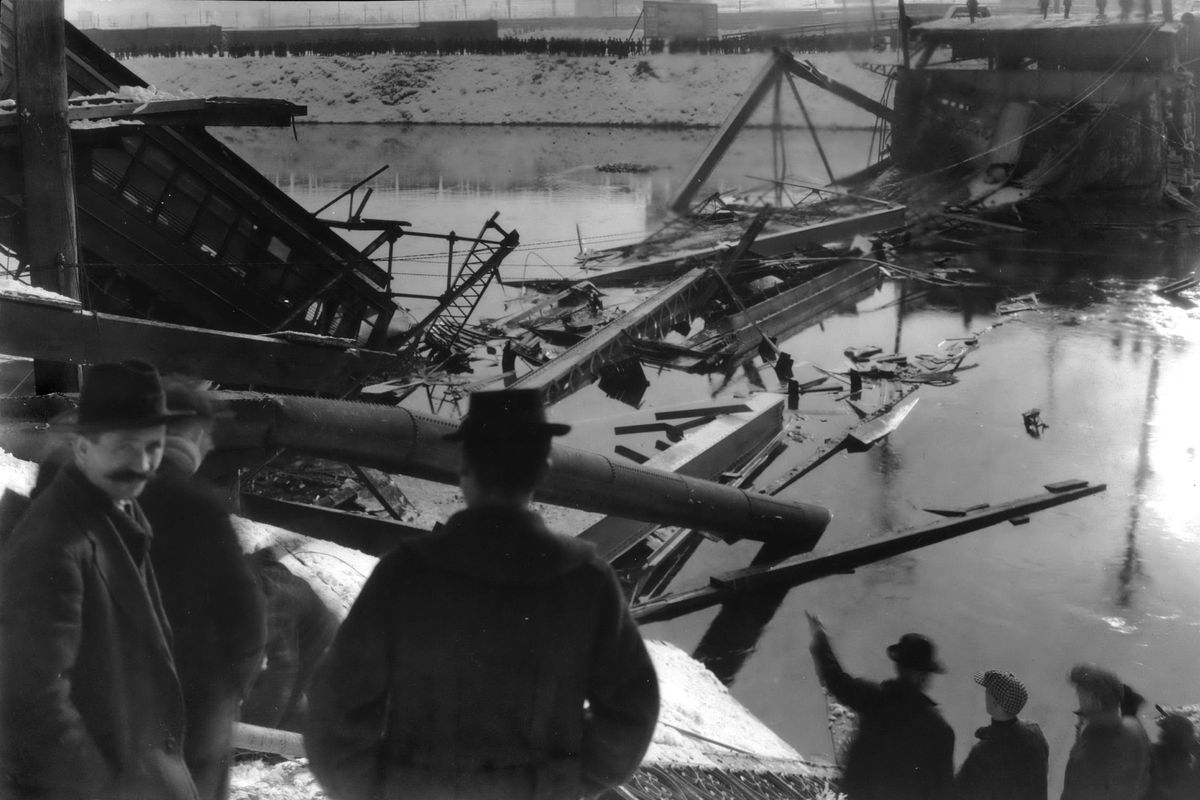Then and Now: Division Street Bridge collapse in 1915
Present day: The six-lane Division Street Bridge, the site of the 1915 structural collapse, is shown Saturday, April 14, 2018 in downtown Spokane. The current bridge was constructed in 1992. (Jesse Tinsley / The Spokesman-Review)
Bridges across the river are crucial to the business life of Spokane. In the years before private automobiles, many workers needed to reach the downtown area each day.
On the chilly morning of Dec. 18, 1915, the steel-framed 1892 Division Street Bridge shuddered slightly as two slow-moving streetcars started toward each other from opposite ends of the bridge. It was still dark and it had snowed overnight. The southbound car carried 18 or so sleepy-eyed workers from the North Side, a motorman and a conductor. The electric cars only moved at 5 mph.
Without warning, at 6:11 a.m., the bridge’s girders gave way, and the the cars fell into the icy water. The northbound car remained suspended above the river surface, perched precariously near the south bank. Those four occupants escaped unscathed.
But the southbound car plunged into 30 to 40 feet of water, submerging completely. A girder swept over the top of the car at seat height, instantly killing some occupants.
Conductor Murrow Davis told The Spokesman-Review in 1965: “In the darkness there was nothing we could do, as the car quickly sank into the icy water, coming to rest on the bridge floor as it sank to the river bottom. All of us who made it were lucky to have come out alive. I shall never forget to my dying day the crashing steel, the awful sudden darkness lighted only by flying sparks made by electrical short circuits, and the screams of the injured and dying.”
Davis helped some of the others to safety. The fire department took 30 minutes to get around to the north end, which was closest to the escaping victims. Firefighters extended ladders to shivering survivors. Five men died and 12 were injured. The dead men – two saloon owners, a mill engineer, a carpenter and a porter – all left widows and children behind. It took hours of work to free the victims from the wreckage.
The bridge was quickly replaced with a wood span, but voters approved a new concrete bridge three years later. It was replaced with a larger structure in 1992.

